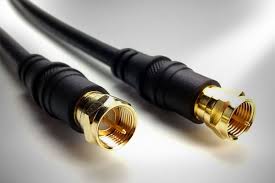UFL Connector: Compact and Efficient RF Connection Solutions

RG59 Cable: A Guide to Coaxial Cable for Home and Commercial Use
RG59 cable is one of the most commonly used types of coaxial cable in both home and commercial applications. It is primarily used for transmitting audio and video signals and is widely recognized for its versatility in various installations, from CCTV systems to older cable TV setups. This article will explore the details, uses, and advantages of RG59 cables, as well as compare them to RG6 cables, another popular type of coaxial cable.
What is RG59 Cable?
RG59 cable is a type of coaxial cable designed for low-frequency signal transmission. It consists of a solid copper core conductor surrounded by a dielectric insulator, which is then shielded by a metallic braid to protect against electromagnetic interference. This assembly is finally encased in a plastic or PVC jacket, which protects the internal components from environmental damage.
RG59 cable has a characteristic impedance of 75 ohms, making it suitable for transmitting audio and video signals in both residential and commercial settings. However, due to its thinner conductor and lower shielding effectiveness, RG59 is best suited for short-distance signal transmission. It performs well in applications like CCTV systems, low-frequency analog video, and short cable television runs.
Key Features of RG59 Cable
75 Ohm Impedance
The 75-ohm impedance of RG59 cable makes it ideal for handling video signals. It’s compatible with most consumer electronics, including television sets, DVD players, and video recorders. Additionally, the cable’s design allows for efficient signal transmission, minimizing signal loss and interference when used within its recommended distance limits.
Flexibility and Ease of Installation
Due to its thinner construction compared to other coaxial cables, RG59 is more flexible and easier to install. This makes it an excellent choice for indoor installations where tight spaces or frequent bends in the cable route are required. Its smaller diameter also makes it easier to route through walls, ceilings, and other confined areas.
Affordable Cost
One of the biggest advantages of RG59 cable is its affordability. Because it is less complex and uses thinner materials than some other types of coaxial cable, it is generally less expensive. This makes it a budget-friendly option for installations that don’t require high-frequency signal transmission or long-distance runs.
Common Applications of RG59 Cable
CCTV and Security Systems
One of the most common uses of RG59 cable is in CCTV and security camera installations. The cable’s ability to handle low-frequency video signals makes it an excellent choice for transmitting footage from security cameras to recording devices or monitoring screens. The cable is typically paired with BNC connectors, which provide a secure connection between the camera and the recording equipment.
Analog Video Transmission
In older analog video setups, RG59 cable is often used to connect video sources like VCRs, DVD players, and older television sets. Its compatibility with low-frequency analog signals makes it a reliable choice for transmitting video without significant signal loss over short distances.
Short-Distance Cable TV Runs
While RG59 was once widely used for cable television installations, it has largely been replaced by RG6 cable in modern applications. However, it can still be found in short-distance cable TV setups where the cable length is under 100 feet. In these cases, RG59 provides adequate signal transmission without noticeable degradation.
RG59 Cable vs. RG6 Cable
Although RG59 is still used in many applications, RG6 cable has become the preferred choice for most modern installations. Let’s take a closer look at how the two cables compare.
Signal Transmission
One of the primary differences between RG59 and RG6 cables lies in their signal transmission capabilities. RG6 cable is designed for higher-frequency signal transmission, making it more suitable for modern digital applications such as satellite TV, internet, and high-definition television (HDTV). In contrast, RG59 is better suited for lower-frequency signals and shorter runs, such as CCTV installations or older analog video systems.
The thicker conductor in RG6 cable allows it to transmit signals over longer distances without significant loss, which is essential for high-frequency applications. Additionally, RG6 has better shielding, which provides more protection against electromagnetic interference (EMI) and radio-frequency interference (RFI). This enhanced shielding ensures that signals remain clear and stable, even in areas with high levels of interference.
Cable Construction
RG6 cable is typically thicker than RG59, due to its larger conductor and additional layers of shielding. This extra thickness helps reduce signal loss over longer distances, making RG6 a better choice for installations where cable runs exceed 100 feet. The added shielding in RG6 also improves its performance in outdoor installations, where environmental factors like weather and electrical interference can degrade signal quality.
In contrast, RG59 is thinner and more flexible, which makes it easier to install in tight spaces or locations where the cable needs to be bent or maneuvered around obstacles. However, this thinner design also limits its performance in high-frequency or long-distance applications.
Cost Comparison
RG59 cable is generally more affordable than RG6 cable, making it a cost-effective option for installations that don’t require high-frequency signal transmission or long cable runs. For example, in a CCTV system where the cameras are close to the recording device, RG59 offers sufficient performance at a lower cost. However, for modern digital applications or installations requiring longer cable runs, the additional cost of RG6 is often justified by its superior performance.
When to Use RG59 vs. RG6 Cable
When deciding between RG59 and RG6 cable, it’s essential to consider the specific needs of your installation. Here are some general guidelines:
- Use RG59 cable for low-frequency signal transmission, such as analog video, CCTV systems, or short cable TV runs. If your installation involves cable runs of less than 100 feet and doesn’t require high-frequency signals, RG59 is an affordable and effective choice.
- Use RG6 cable for modern digital applications, including satellite TV, HDTV, and internet connections. If you need to transmit signals over long distances or in environments with high levels of interference, RG6 provides better performance and signal integrity.
Advantages of RG59 Cable
Flexibility in Installation
RG59 cable is highly flexible, making it easy to install in spaces where larger, less flexible cables might be difficult to route. This flexibility allows for easier installation in tight spaces, including walls, ceilings, and equipment racks.
Cost-Effective for Short Runs
For installations that don’t require high-frequency signals or long-distance transmission, RG59 offers a more affordable solution than RG6. In applications like CCTV systems or short-distance cable TV runs, RG59 provides adequate performance at a lower cost.
Compatibility with Older Systems
If you’re working with older analog video systems or legacy equipment, RG59 is often the best choice due to its compatibility with low-frequency signals. Many older devices are designed to work with RG59 cables, making them a natural fit for these types of installations.
Conclusion
RG59 cable remains a popular choice for specific applications that require short-distance, low-frequency signal transmission. Whether you’re setting up a CCTV system, installing a short cable TV run, or working with older analog video equipment, RG59 provides reliable performance at an affordable price. However, for modern digital applications and longer cable runs, RG6 cable is typically the better choice due to its superior shielding and ability to handle high-frequency signals.
By understanding the differences between RG59 and RG6, you can choose the right coaxial cable for your specific needs, ensuring optimal performance and signal integrity for your installation.





